Christoffer Holmgård
modl.ai
Human-like Bots for Tactical Shooters Using Compute-Efficient Sensors
Dec 30, 2024Abstract:Artificial intelligence (AI) has enabled agents to master complex video games, from first-person shooters like Counter-Strike to real-time strategy games such as StarCraft II and racing games like Gran Turismo. While these achievements are notable, applying these AI methods in commercial video game production remains challenging due to computational constraints. In commercial scenarios, the majority of computational resources are allocated to 3D rendering, leaving limited capacity for AI methods, which often demand high computational power, particularly those relying on pixel-based sensors. Moreover, the gaming industry prioritizes creating human-like behavior in AI agents to enhance player experience, unlike academic models that focus on maximizing game performance. This paper introduces a novel methodology for training neural networks via imitation learning to play a complex, commercial-standard, VALORANT-like 2v2 tactical shooter game, requiring only modest CPU hardware during inference. Our approach leverages an innovative, pixel-free perception architecture using a small set of ray-cast sensors, which capture essential spatial information efficiently. These sensors allow AI to perform competently without the computational overhead of traditional methods. Models are trained to mimic human behavior using supervised learning on human trajectory data, resulting in realistic and engaging AI agents. Human evaluation tests confirm that our AI agents provide human-like gameplay experiences while operating efficiently under computational constraints. This offers a significant advancement in AI model development for tactical shooter games and possibly other genres.
The Ethics of AI in Games
May 12, 2023Abstract:Video games are one of the richest and most popular forms of human-computer interaction and, hence, their role is critical for our understanding of human behaviour and affect at a large scale. As artificial intelligence (AI) tools are gradually adopted by the game industry a series of ethical concerns arise. Such concerns, however, have so far not been extensively discussed in a video game context. Motivated by the lack of a comprehensive review of the ethics of AI as applied to games, we survey the current state of the art in this area and discuss ethical considerations of these systems from the holistic perspective of the affective loop. Through the components of this loop, we study the ethical challenges that AI faces in video game development. Elicitation highlights the ethical boundaries of artificially induced emotions; sensing showcases the trade-off between privacy and safe gaming spaces; and detection, as utilised during in-game adaptation, poses challenges to transparency and ownership. This paper calls for an open dialogue and action for the games of today and the virtual spaces of the future. By setting an appropriate framework we aim to protect users and to guide developers towards safer and better experiences for their customers.
Capturing Local and Global Patterns in Procedural Content Generation via Machine Learning
May 26, 2020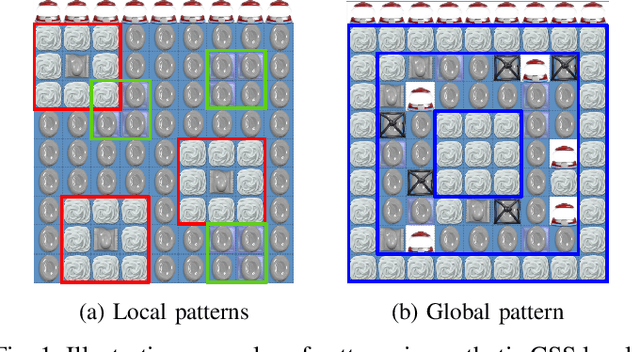
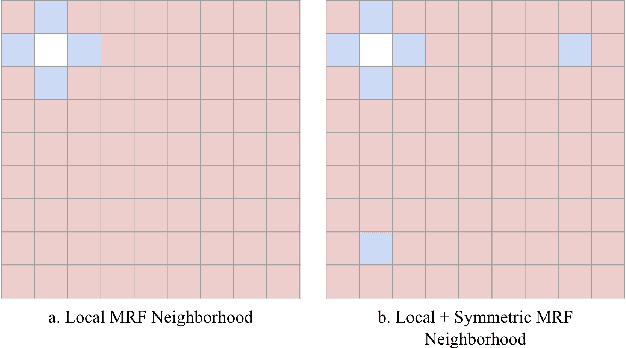
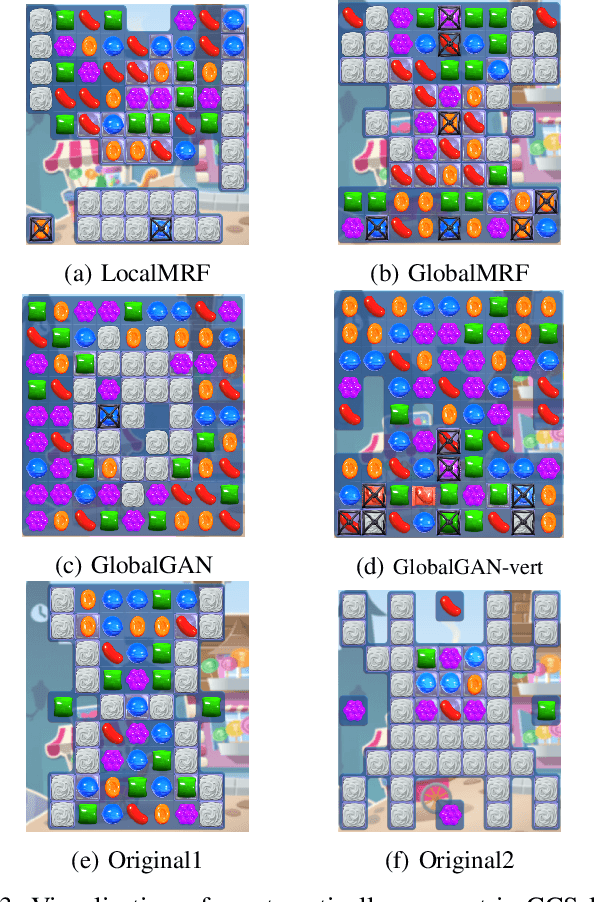
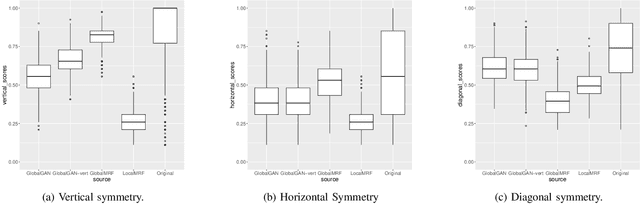
Abstract:Recent procedural content generation via machine learning (PCGML) methods allow learning from existing content to produce similar content automatically. While these approaches are able to generate content for different games (e.g. Super Mario Bros., DOOM, Zelda, and Kid Icarus), it is an open questions how well these approaches can capture large-scale visual patterns such as symmetry. In this paper, we propose match-three games as a domain to test PCGML algorithms regarding their ability to generate suitable patterns. We demonstrate that popular algorithm such as Generative Adversarial Networks struggle in this domain and propose adaptations to improve their performance. In particular we augment the neighborhood of a Markov Random Fields approach to not only take local but also symmetric positional information into account. We conduct several empirical tests including a user study that show the improvements achieved by the proposed modifications, and obtain promising results.
Automated Playtesting of Matching Tile Games
Jul 15, 2019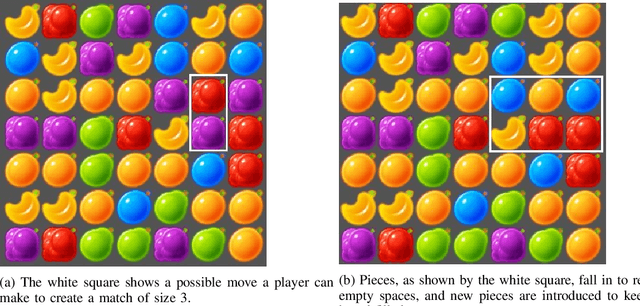
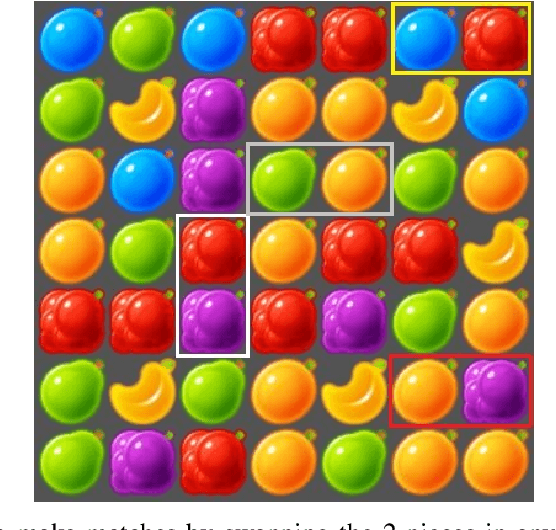
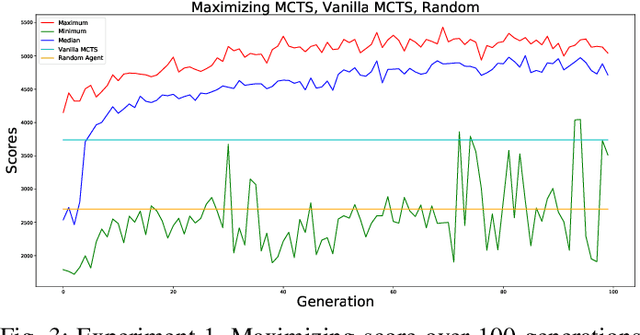
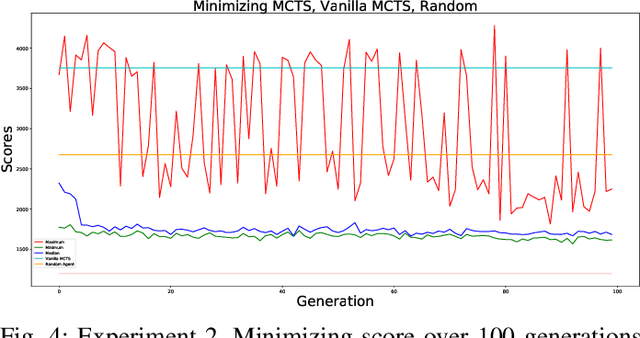
Abstract:Matching tile games are an extremely popular game genre. Arguably the most popular iteration, Match-3 games, are simple to understand puzzle games, making them great benchmarks for research. In this paper, we propose developing different procedural personas for Match-3 games in order to approximate different human playstyles to create an automated playtesting system. The procedural personas are realized through evolving the utility function for the Monte Carlo Tree Search agent. We compare the performance and results of the evolution agents with the standard Vanilla Monte Carlo Tree Search implementation as well as to a random move-selection agent. We then observe the impacts on both the game's design and the game design process. Lastly, a user study is performed to compare the agents to human play traces.
Procedural Content Generation via Machine Learning (PCGML)
May 07, 2018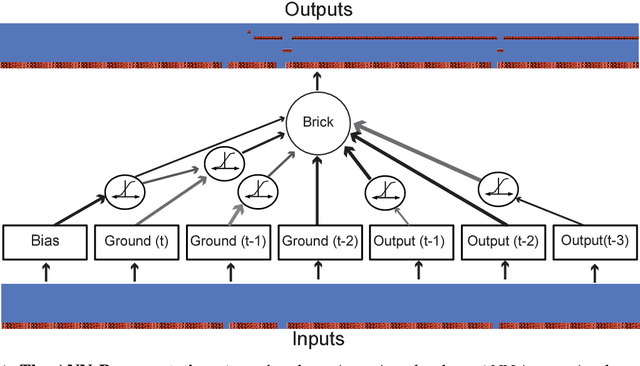

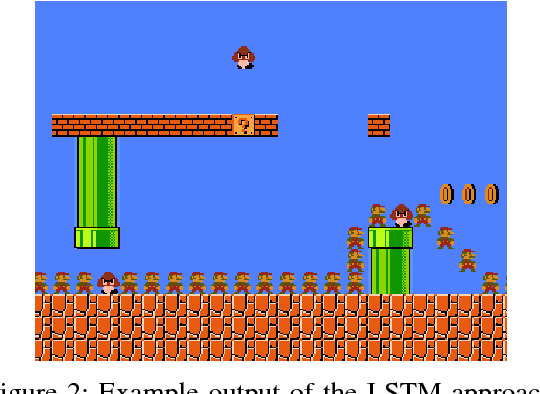
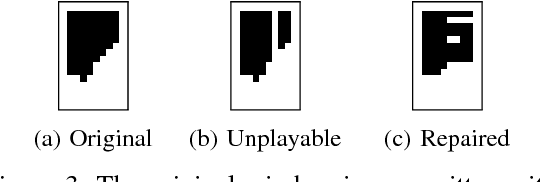
Abstract:This survey explores Procedural Content Generation via Machine Learning (PCGML), defined as the generation of game content using machine learning models trained on existing content. As the importance of PCG for game development increases, researchers explore new avenues for generating high-quality content with or without human involvement; this paper addresses the relatively new paradigm of using machine learning (in contrast with search-based, solver-based, and constructive methods). We focus on what is most often considered functional game content such as platformer levels, game maps, interactive fiction stories, and cards in collectible card games, as opposed to cosmetic content such as sprites and sound effects. In addition to using PCG for autonomous generation, co-creativity, mixed-initiative design, and compression, PCGML is suited for repair, critique, and content analysis because of its focus on modeling existing content. We discuss various data sources and representations that affect the resulting generated content. Multiple PCGML methods are covered, including neural networks, long short-term memory (LSTM) networks, autoencoders, and deep convolutional networks; Markov models, $n$-grams, and multi-dimensional Markov chains; clustering; and matrix factorization. Finally, we discuss open problems in the application of PCGML, including learning from small datasets, lack of training data, multi-layered learning, style-transfer, parameter tuning, and PCG as a game mechanic.
Automated Playtesting with Procedural Personas through MCTS with Evolved Heuristics
Feb 19, 2018

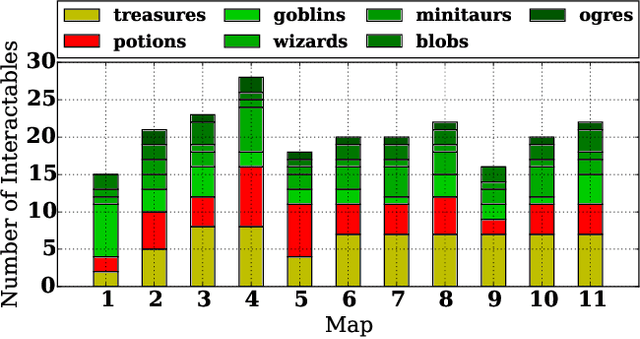
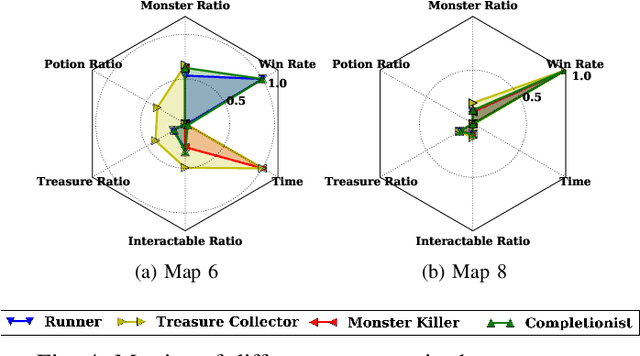
Abstract:This paper describes a method for generative player modeling and its application to the automatic testing of game content using archetypal player models called procedural personas. Theoretically grounded in psychological decision theory, procedural personas are implemented using a variation of Monte Carlo Tree Search (MCTS) where the node selection criteria are developed using evolutionary computation, replacing the standard UCB1 criterion of MCTS. Using these personas we demonstrate how generative player models can be applied to a varied corpus of game levels and demonstrate how different play styles can be enacted in each level. In short, we use artificially intelligent personas to construct synthetic playtesters. The proposed approach could be used as a tool for automatic play testing when human feedback is not readily available or when quick visualization of potential interactions is necessary. Possible applications include interactive tools during game development or procedural content generation systems where many evaluations must be conducted within a short time span.
Mechanics Automatically Recognized via Interactive Observation: Jumping
Jul 12, 2017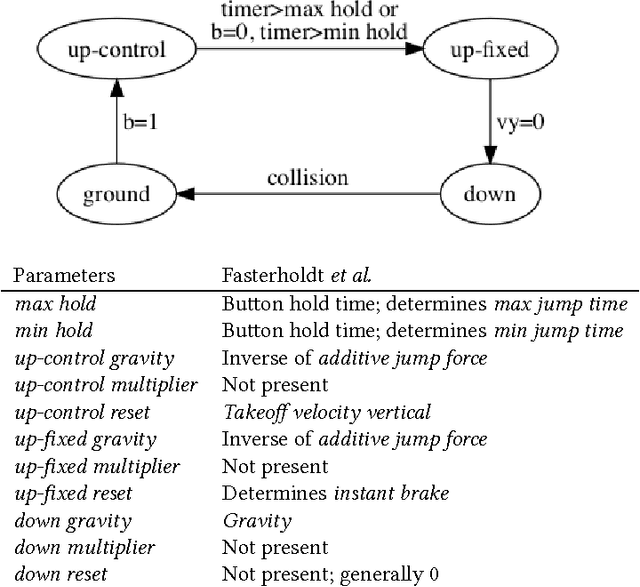
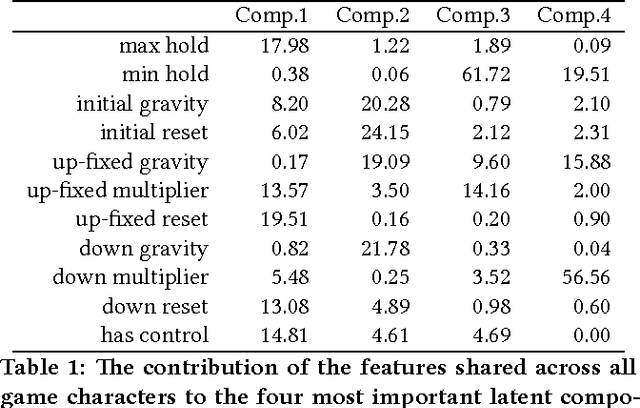
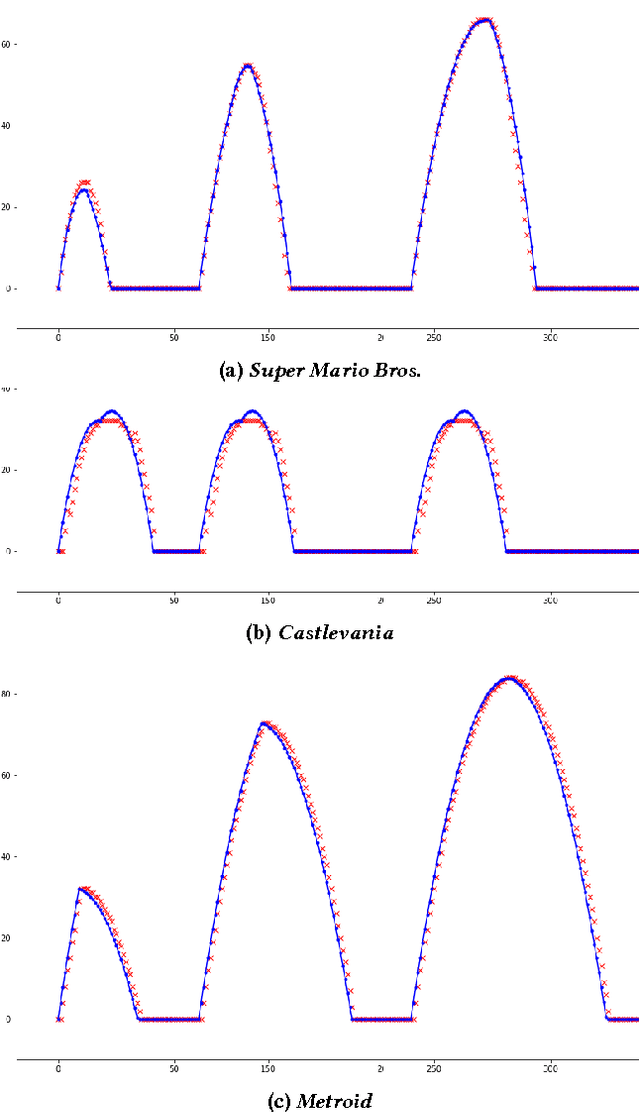
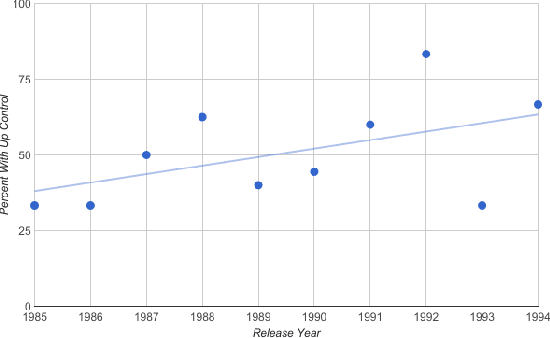
Abstract:Jumping has been an important mechanic since its introduction in Donkey Kong. It has taken a variety of forms and shown up in numerous games, with each jump having a different feel. In this paper, we use a modified Nintendo Entertainment System (NES) emulator to semi-automatically run experiments on a large subset (30%) of NES platform games. We use these experiments to build models of jumps from different developers, series, and games across the history of the console. We then examine these models to gain insights into different forms of jumping and their associated feel.
 Add to Chrome
Add to Chrome Add to Firefox
Add to Firefox Add to Edge
Add to Edge